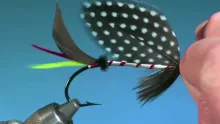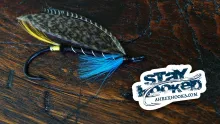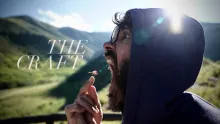A fascinating "true crime" story that tells about the theft of skins from protected bird from a natural history museum in the UK with the purpose of using them for fly tying
Updated or edited 10 months ago
I read a lot of books. My major book consumption is within fly fishing and fly tying. Second on my list is science fiction, third is various non-fiction (often scientific) books and somewhere around fourth or fifth comes crime and thrillers. I'm not a huge fan of the latter two genres, mainly because many crime and thriller novels simply aren't good. The template is very much the same, and the writing often mediocre.
This book is in some ways in the crime genre, but written in the more contemporary "true crime" style, where an author unravels the behavior, background, actions, environment and mind of a criminal.
The book called my name the moment I saw its cover.
The book called my name the moment I saw its cover.
The subtitle reads "Beauty, Obsession, and the Natural History Heist of the Century" written on a tag like the ones used for biological field samples. Being a trained biologist, and having spent a fair amount of time in the hallways of the Zoological Museum in Copenhagen while writing a (yet unfinished) thesis, the term "Natural History Heist" tickled something in me.
I also recognized another aspect of the subject: fly-tying. The image on the cover is of a dozen or so colorful feathers, parrot most likely, and certainly something I have seen on pictures of many classic flies, on a number of framed full dressed flies and not least in the tying material drawers of several die-hard classic salmon fly tyers.
The cover notes confirmed my notion: "...Home to one of the largest ornithological collections in the world, the Tring museum was full of rare bird specimens whose gorgeous feathers were worth staggering amounts of money to the men who shared Edwin’s obsession: the Victorian art of salmon fly-tying..."
I immediately ordered the book and paid 11 UK£ or about 15 US$ for it new in spite of it being listed most places for its cover price, 27 US$.
The book arrived a few days later, and I started reading and was immediately sucked into the story.
The book consists of three major parts:
The history of the bird skins, the man who collected them, Alfred Russel Wallace, and an account of the whole "feather and bird skin culture", both among scientists of the 1800's, fashion designers and women of the same era and fly tyers who started using the gaudy feathers for salmon flies in the same period and well into the 1900's after hats and dresses adorned with feathers weren't as much en vogue anymore. This part tells about the huge toll taken on wild birds, killed for the sake of vanity and literally causing extinction of several species and putting many others in danger of dying out.
The second part is about Edwin Rist, a fly tyer that I had personally never heard of before this, but who certainly was someone noticeable in the community of classic salmon fly tyers. This part tells about his fascination with fly tying, mainly classic salmon flies, and authentic materials in particular. It also tells the story of the crime itself, the apprehension of Rist and the trial against him.
The third part is the story of the author, Kirk Wallace Johnson, trying to unearth what really happened, who Rist really is and what fate overcame the large part of the bird skins stolen, which were never returned.
I found all three equally exciting and captivating, and all three equally depressing.
Depressing because humankind fully or nearly removed many species of birds from existence, and hunted, killed and traded rare birds in hundreds of thousands.
Depressing because someone stole invaluable scientific material, ruined it by removing tags, cutting up skins and plucking off feathers, sold bits and pieces as well as whole skins off to a community fully willing to believe that everything was completely legal in spite of all signals reading the opposite. And paying extreme amounts of money for it at the same time, keeping a pretty lucrative economy running for those involved.
Depressing because in spite of a really admirable effort from the author to get to the bottom of the whole matter, only very few people in the same community were willing to talk to him, even fewer were willing to tell the truth and most resented his "prying" - some even very harshly, others just by being silent and removing traces of the whole affair.
I found all three equally exciting and captivating, and all three equally depressing.
I have never tied full dressed salmon flies myself, and have never been fascinated by them in the way that many of my fly tying fellows are. But I have seen enough and been enough in contact with people who do tie them to know of materials such as Indian crow, chatterer, tracopan, cotinga, bustard, birds of paradise and many more, and to recognize the crave of some of these tyers to own and tie with feathers from these birds. Their urge is well underscored by the fact that searching for "blue chatterer" on the web will not show you the bird, but skins, feathers and sources where you can buy them.
Feathers from most of these birds are rare and a highly valued commodity, and with the prices they fetch, it's no wonder that a person such as Edwin Rist was tempted to get a hold of them – for his own use and to sell.
In spite of the serious subject, I thoroughly enjoyed the book, which is well written and well structured and both accounts the history, the event itself and the author's very personal journey through the whole matter.
I did stumble on a lot of names of people, events and businesses that I know, quite a few that I've heard of and a surprising number that I never heard of.
The book is a great read, and can be enjoyed by fly tyers as well as people who have never tied a fly or even known people who do.
- Log in to post comments







